Bla la badlkdn
EBOMI LAKE
The lake is located at Ipesi in Akoko South-East and it is about 115km from Akure – the state capital. The lake which is 1.6km long and 40m wide, has fascinating historical antecedent according to the locals. The word “Ebomi” is an adulteration of a Yoruba word “Abami”.

Situated in the pristine forests of Ipesi-Akoko enclave, are the marvellous waters of Ebomi Lake, flowing gracefully below the dense canopies of verdant forests.
The lake, located at Ipesi-Akoko, is also known as ”the bottomless lake” because of its depth which is difficult to estimate. It stretches though a distance of about 2km and is about 45m wide, with thick forest canopies subtly camouflaging its steep banks.
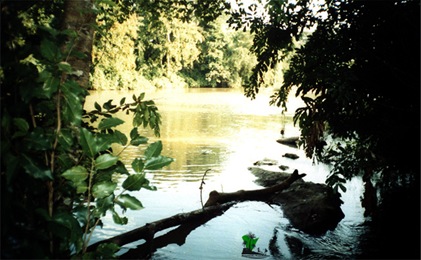
According to oral history, the people of Ipesi Akoko met Ebomi Lake at Ipesi and because they couldn’t find the appriopriate words to describe their curiosity about the features of the lake, they decided to call the strangely wide body of water ”Abami’, which literally means ‘mysterious’. This name, with time changed to ”Ebomi” which is the name it is being called to this day.
The lake, according to the inhabitants of Ipesi Akoko, has supernatural powers for protecting the villagers during the times of war. The lake is believed to have unseen shoulders that fight battles for the Ipesi people. In another dimension, the lake deities give the villagers different gifts such as children, fishes, fowls etc.
OWO MUSEUM OF ANTIQUES
Owo Museum is a museum in Owo, Nigeria. The museum was founded in 1968 to accommodate the antiquities which were formerly in the Olowo Palace. The museum contains significant archaeological artifacts and ethnographic materials discovered in the Owo area.The Owo site was first excavated in 1969-1971 by Ekpo Eyo under the auspices of the Department of Antiquities of the Government of Nigeria. Due to Owo’s location between the two famous art centers of Ife and Benin, the site reflects both artistic traditions. Important discoveries include terracotta sculptures dating from the 15th century.

The Owo Museum of Antiquities portrays a humble and classical facade, yet holding an array of rich historical and archaeological artefacts which depict the early life of generations gone by. Although there is not much awareness about its significance, it remains a place for inquisitive tourists and ethnographic researchers.Founded in 1968 for the purpose of preserving the antiquities of the monarchical history of the Owo kingdom, it is also a host to famous artefacts from the two great ancient traditions of Benin and Ife. Owo’s strategic location between these two traditions enriches its contents, potential and value as a tourist centre.
Underscoring its origin and its intrinsic value to the culture and traditions of the Owo people is its location within the palace confines of the Olowo, the town’s monarch. The museum is the historical link between the people, their past and their ancestors. The materials are arranged into three broad sections – early civilisation, archaeological excavations and exhibition gallery.

Approaching the first section, the visitor is struck by a picture of fossils unearthed in 1965, in Iwo Eleru, which is said to be the earliest man on the soil of West Africa. The skull and other skeletal remains of the “early man” is dated to be about 12,000 years. Even more striking is the fact that ancient tools were said to have been found along with the fossil. These are stone and wooden tools specially made for cutting and for agricultural purposes.
This is why some believe that but for the corruption of Western civilisation, it would have been possible for the African society to develop its tools and machinery to serve its needs in science and technology.The museum also displays an array of terra cotta heads discovered by Ekpo Eyo during the 1969 excavations in Owo. These terra cotta sculptures date back to the 15th century. Eyo carried out the excavations under the Department of Antiquities.
The Owo terra cotta heads bear a striking resemblance with those of Ife and Benin, underlining the similarities among the three cultures.A fascinating display of pictures chronicling the Igogo Festival of the Owo people stands as one of the attractions of the museum.
CAVE OF ASHES
Isarun or Isharun is a village in Ifedore, Ondo State, Nigeria. It lies 24km of Akure the state capital. The village gained international attraction in 1922 when a hunter, Chief Obele, first discovered the Cave of Ashes or (in yorùbá:ìhò eléérù).

In 1965 English archeologist, Thurstan Shaw and his team visited the thick forest of Isarun where they conducted an extensive research on the place, they worked rigorously and subsequently excavated bones of stone age man in a cave dated to have been around 11,200 years old, other exhumed artifacts such as pottery works dating as far back as 1000 BC, human bones and a cast of skull was said to have been deposited at the University of Ibadan museum and some were reportedly taken to London for research work.
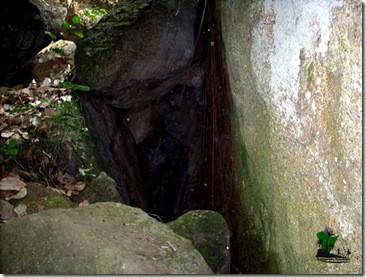
IDANRE FOREST RESERVE
Idanre Forest Reserve is in Idanre local government area of the Nigerian state of Ondo, in the south-west part of the country. This International Union for Conservation of Nature designated nature reserve covers 561 square kilometres (217 sq mi).
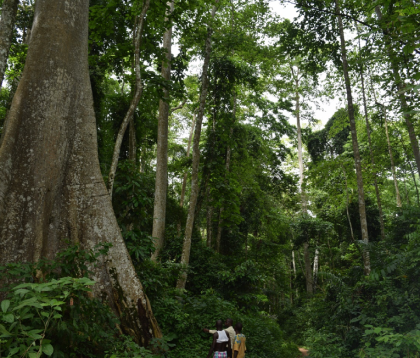
It is a lowland rainforest with an altitude of 10 to 400 meters.
IGBO OLUDUMARE
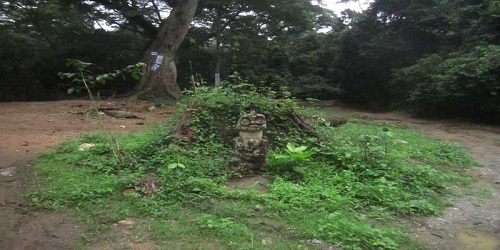
Igbo Olodumare, a world within our world, robed in plush vegetative apparel, is simply a mystifying place, and just as its name implies, it is ‘The Forest of the Almighty’.The mysterious forest was first brought to notice by two of D. O. Fagunwa’s great works – Ògbójú ode nínú Igbó írúnmolè & Igbó Olódùmarè; and was later translated to English language by the Nobel laureate, Prof Wole Soyinka. He described the forest as the forest of witches, wizards, spirits and a hundred more mysterious things.
He wrote of giant snails and crabs, he wrote of things that makes one wonder, things that sparks the fire of wanderlust a the reader’s heart. This same forest is present on our land, the land of Oke-Igbo, Ile Oluji-Oke Igbo L.G.A., Ondo State. Pa Fagunwa is also a native of Oke-Igbo himself.
The enchanting forest is a two-hour journey from Akure, the state capital. The people of Ile-Oluji are mostly cocoa and oil-palm farmers. They also make a living through palm wine tapping which is also major characteristic occupation in south west of Nigeria.Twenty minutes to the entrance of Igbo-Olodumare, there sits a bizarre-looking village which the people regard as the age-old ‘guard’ of the ancient forest.
A visitor cannot but get distracted by the picturesque Ògèrìwèsé Rivulet- the first attraction in the mysterious forest, which the people believe possesses spiritual ability to prevent evil creatures from entering into the village and also neutralize any form of charm evil-minded visitors attempt to take into the forest.Igbo-Olodumare is a rugged terrain, densely punctuated with beautiful inselbergs of varying sizes in-between which thick forest covers intertwine.
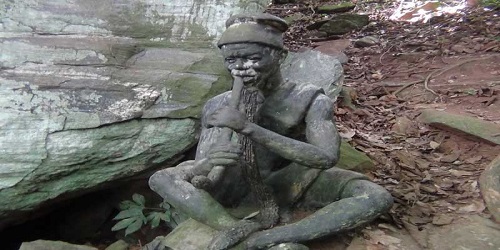
Continuing along the footpath leading from the river, a t-junction leads to a place called Òkè-Lángbòdò and a place called Ìsálú Òrun- it is from this two places that one links other parts of the forest. It is said that Ìsálú Òrun is not a place where visitors are allowed to go because the place is believed to be the residence of the spirits.
The entrance of Òkè-Lángbòdò is marked by a small opening under a big granite rock where prayers are made before entering the mystifying forest. Also at the entrance is a sculptured figure of ancient hunter which Pa Faguwa mentioned in his novel, being a human being before he was supernaturally turned into a rock.
The entrance of Òkè-Lángbòdò forest was the exact point the writer described as the site of the occurence. The peak of Òkè-Lángbòdò has ever constituted a daunting challenge for adventurous rock-climbers visiting the forest due to its steep and slippery slopes. Nevertheless, a visit to the forest will not be completely gratifying without an ascent of this hill.
On its ascent, one is treated to panoramic views of the entire forest, enchanting landscapes bedecked by the rare ewé àkokò plants adorning the hill tops. Ewé àkokò plant is used for the coronation of a new king in the land.
SMOKIN HILLS GOLF RESORT
Located outside the university town of Ilara-Mokin, close to the Ondo state capital of Akure, the Smokin Hills Golf Resort was developed by one of the nation’s top businessmen, Chief Michael Ade Ojo, the founder of Elizade Toyota Nigeria.
American architect Ron Garl was tasked with routing the fairways of this private facility around a formerly wooded, 140-acre landscape, where a practice area, driving range and par three course complement the main 18-hole layout.
The signature hole arrives late in the round at the 172-metre 16th but this devilish par three is worth waiting for because it demands a full carry across water to an island green, a challenge that’s reminiscent of the 17th at the TPC Sawgrass Stadium course.
IDANRE HILLS
The Idanre Hill, or Oke Idanre is located in Idanre town in Ondo State of southwestern Nigeria.
Idanre Hills resort centre, Idanre LGA.

The hill of Idanre is one of the most beautiful natural landscapes in Nigeria. It includes such cultural sites as “Owa’s Palace, Shrines, Old Court, Belfry, Agbooogun footprint, thunder water (Omi Apaara) and burial mounds and grounds”. It resides 3000 ft (914.4meters) above sea level and houses a unique ecosystem upon which the cultural landscape has integrated.
Idanre Hills is located on a Precambrian igneous batholith that is about 500 Million years old, and is cut by several large fracture that form deep valleys within the rocks. Idanre Hills is a scenic treasure! This is one of the many tourist attraction centres in Ondo State.

This site was added to the UNESCO World Heritage Tentative List on October 8, 2007 in the Cultural category.

Idanre Hill is said to have 9 ancient wonders and beliefs
All the following myths are located on the Idanre hills;
1. “Ibi Akaso” The Steps
2. The King’s Palace
3. Agboogun’s Legacy
4. Unreadable signs
5. Agboogun’s footprint
6. The wonderful mat
7. “Omi Aopara” Aopara Water
8. The Orosun Hill
9. Arun river
The hill stands out and is listed in UNESCO World Heritage Sites.
Amietophrynus perreti, or the Perret’s toad, is only known from a single locality at the Idanre Hill. The five sites where forest elephants are found in southern Nigeria are the Omo Forests in Ogun State, the Okomu National Park in Edo State, the Cross River National Park in Cross River State, the Idanre Forests and Osse River Park in Ondo State and the Andoni Island in Rivers State. (Nigerian Conservation Foundation)

The ancient settlement of Idanre has existed on the hill since antiquity, however Western civilization was introduced to the ancient city when a team of missionaries led by Rev. Gilbert Carter arrived in the year 1894.
The missionaries built the first primary school in the year 1896 of which the clay building still stands strong till this day. In the year 1906, a law court was established which includes an ancient prison where the convicts spend their jail term.
